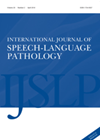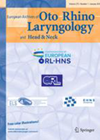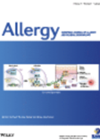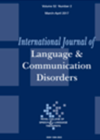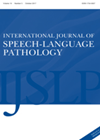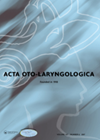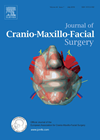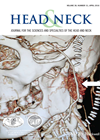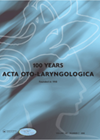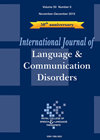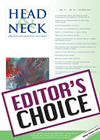
Journal Reviews
Help or hinder: how and why do SLTs make clinical decisions around swallowing?
Dysphagia is a relatively common consequence of stroke, with estimates between 50% and 60% of people presenting with swallowing dysfunction following stroke. It is associated with pneumonia, malnutrition and dehydration which in turn lead to increased length of hospital admission,...
Neurological complications associated with managing degenerative cervical myelopathy
Degenerative cervical myelopathy (DCM) is a common neuropathologic status due to degenerative changes to the cervical spine. There are multiple operative techniques available, including anterior cervical discectomy and fusion, anterior cervical corpectomy, laminoplasty, laminectomy and laminectomy with fusion. C5 palsy...
Systematic review comparing transoral laser surgery versus open partial laryngeal surgery for advanced laryngeal cancer
The aim of this Italian systematic review was to establish outcomes (local control and survival) of conservative laryngeal surgery for advanced T stage laryngeal cancers. Articles published from 1980 onwards, had at least 10 patients that underwent partial laryngeal surgery...
The hot nose
Capsaicin nasal spray can offer moderate to significant symptomatic relief to 70-80% of patients with idiopathic rhinitis (IR). Efficacy was also shown in lab studies. Nasal hyper reactivity (NHR), absence of allergy / infective rhinosinusitis, age limits (18-60), no anatomical...
Increased intensity of treatment: intensity does not improve outcomes
There is a paucity of reports regarding the intensity and appropriate duration of treatment required to improve the language abilities of children with language impairment. This study used direct measures such as the time spent on language, the frequency, number...
Do you use the evidence or do you just know to do that?
In this day and age we generally consider healthcare practice to be evidence-based. Unfortunately there are not always the plethora of research articles available that address the dilemmas of day-to-day clinical practice. This piece of work considers what factors influence...
Should intratympanic steroids be the first line treatment for sudden sensorineural hearing loss?
This article looked at whether intratympanic steroids (ITS) provide more benefits over systemic steroid therapy (SST) as initial therapy in patients with idiopathic sudden sensorineural hearing loss (ISSHL). This meta-analysis study, based on published RCTs, concluded that ITS treatment exhibited...
Is it possible to fix condylar neck fractures with one plate?
Fractures of the condylar neck are fairly common and account for over 25% of all mandible fractures. Over the years a number of modalities have been used to fix these fractures. Direct reduction is complicated by the overlying proximity of...
Best timing for post-treatment PET-CT scans in head and neck cancer
Unfortunately we know that the recurrence rate for head and neck cancer can be high, up to 30-50% in some series. These recurrences tend to occur within the first two years following treatment. Optimal surveillance strategies to detect recurrences early...
Does a labyrinthine fistula in cholesteatoma surgery lead to hearing loss?
Thirty-five patients with labyrinthine fistula related to cholesteatoma were studied retrospectively. All patients underwent CT scans and preoperative hearing tests 1-2 weeks prior to surgery (averaged at 0.5, 1, 2, 3, 4, 8 kHz). All 35 patients underwent mastoid surgery,...
Verbal memory and chronic speech and language disorders following stroke
Stroke is often associated with chronic language disorders like aphasia and apraxia as well as memory impairments. Studies have found that memory problems in stroke are often verbal memory disorders. This review article discusses the association between language and short-term...
Are organ-preserving treatment strategies for T3 laryngeal cancers reducing patient survival?
This article presents the 10-year results of a single institution’s treatment of advanced laryngeal cancer. The institution established a protocol based on the Dutch Head and Neck Society consensus document on laryngeal cancer diagnostics and treatment published in 1991. This...

